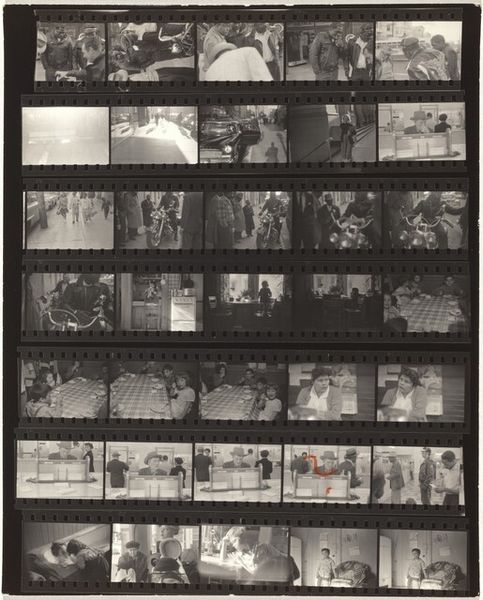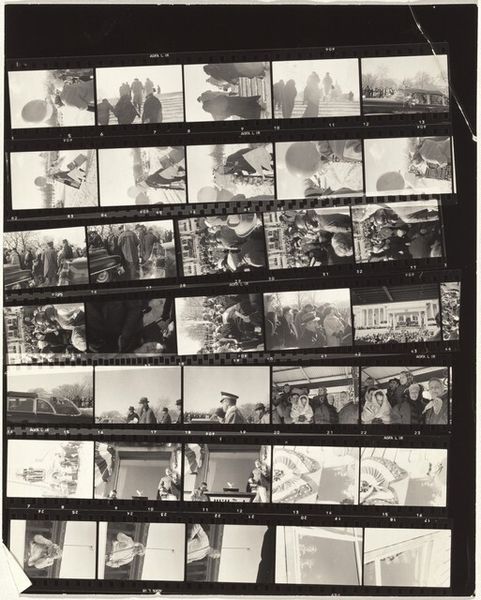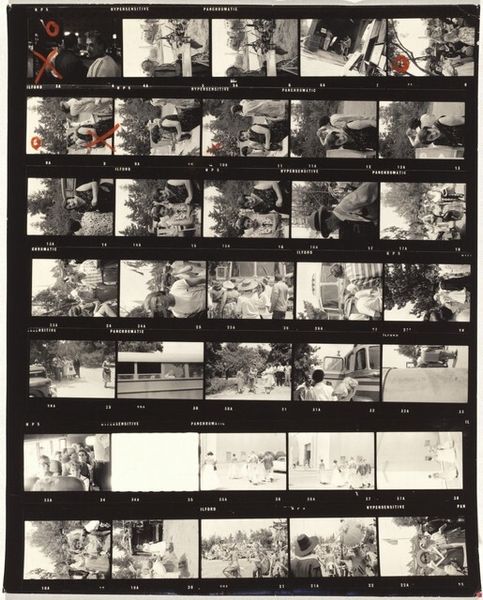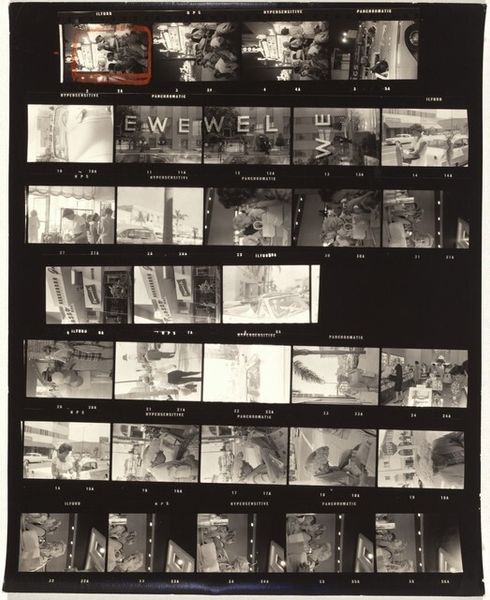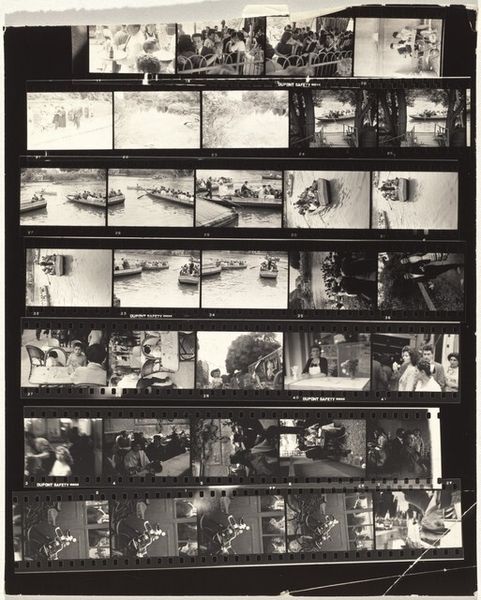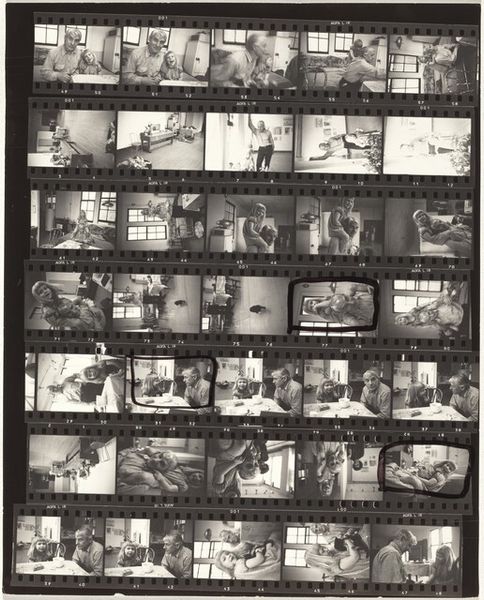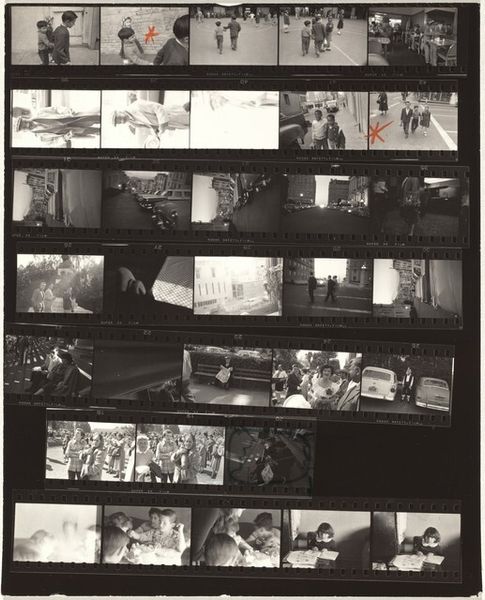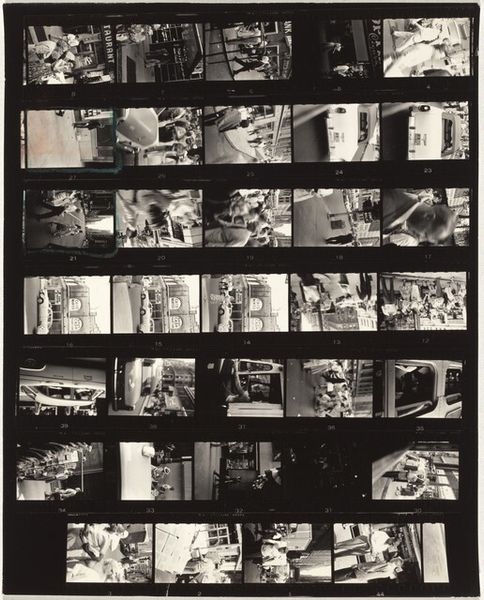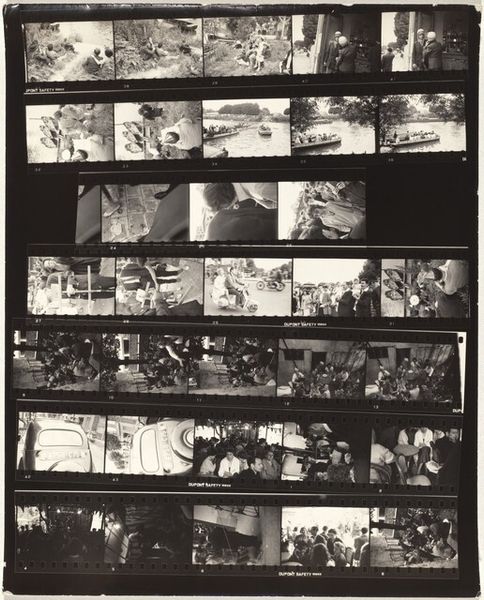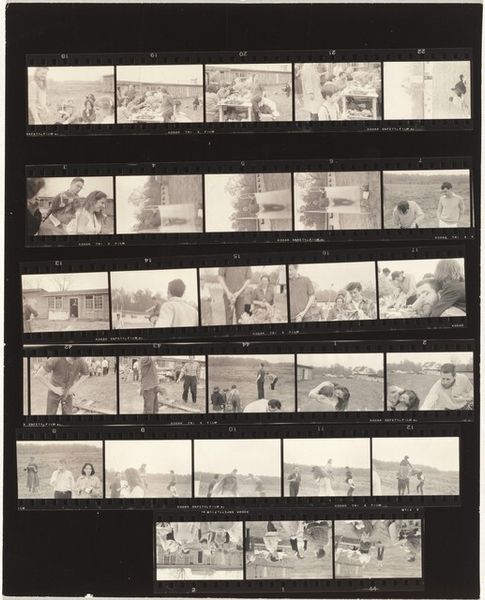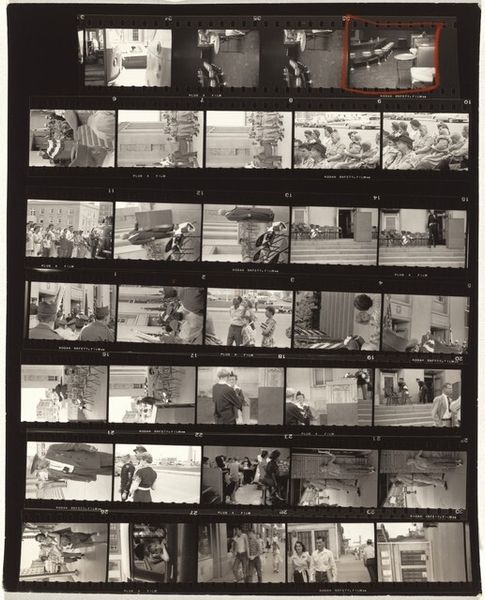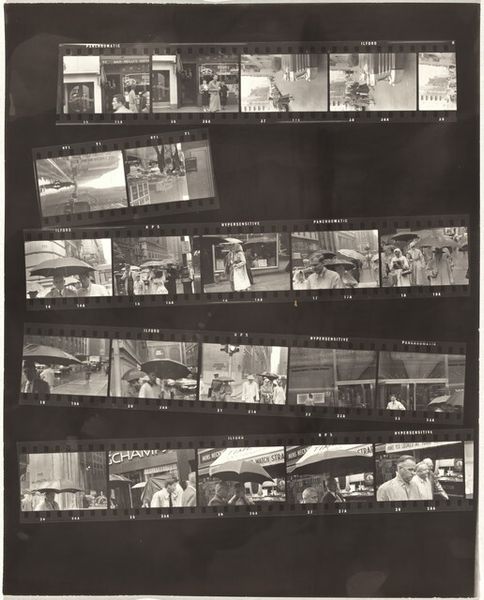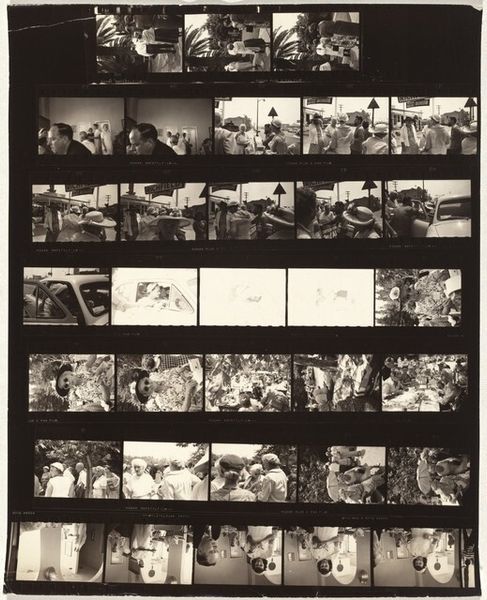
contact-print, photography, happening
#
film photography
#
contact-print
#
photography
#
culture event photography
#
monochrome photography
#
pop-art
#
happening
#
film
Dimensions: overall: 25.3 x 20.2 cm (9 15/16 x 7 15/16 in.)
Copyright: National Gallery of Art: CC0 1.0
Curator: Here we have a contact print by Robert Frank titled "Allan Kaprow's party no number," created around 1957. What's grabbing you as you look at this, Editor? Editor: Immediately, I’m drawn to this raw, almost voyeuristic feel. It's like peeking through the keyhole of a memory. Black and white really amplifies that nostalgia, but with this underlying sense of a story half-told. Curator: The roughness you're sensing is very much part of its power. Frank wasn't aiming for pristine perfection here. He’s captured a Happening organized by Allan Kaprow, a pioneer of performance art, and the medium, a contact-print, lays bare his photographic process. Editor: Right, it's a Happening! Makes so much more sense now. There is this element of orchestrated chaos, a community vibe but then broken up by individual experiences… Do you feel it’s critical? Curator: Critiquing is the foundation of performance art and of Pop-Art style— challenging conventional art spaces, forms, practices. The spontaneity Kaprow sought resonates in Frank's almost documentary approach, resisting any formal, composed art-aesthetic. Editor: Exactly! This feels deliberately un-posed, moments in-between rather than carefully constructed scenes. People just living and eating! What do you think, beyond this sense of community is the main theme of the work? Curator: The fascinating element for me is context: these events blurred the boundaries between art and life. Kaprow's happenings were consciously ephemeral and spontaneous. In retrospect, Frank immortalizes moments through the contact print that resists permanence. Editor: Okay, so if Robert Frank just documented Allan Kaprow, how does he distinguish himself and the artwork here? Does it require him as an artist? Curator: It very much requires him! With these rapid-fire captures of a moment gone quickly, he suggests the dynamism of modern life as the art world became intertwined with every-day culture. Editor: It feels as honest and gritty as any Warhol print but still, beautiful at the same time. Like holding a memory close, even the faded ones. Curator: Ultimately, what lingers with me is how this print captures a pivotal shift—a move away from traditional artistic creation toward something far more participatory and conceptually driven. Editor: Agreed. It’s more than just an image; it’s a tangible fragment of a moment that expanded art’s definition. And thanks to Frank, it sparks endless reflections today.
Comments
No comments
Be the first to comment and join the conversation on the ultimate creative platform.
